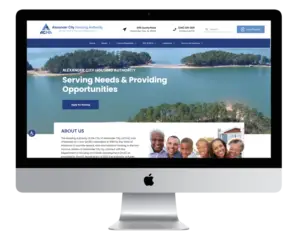Thank you for reading this post, don't forget to subscribe!
What is User Experience (UX) in Web Development?
User Experience (UX) in web development refers to the overall experience a user has when interacting with a website or web application. It encompasses aspects such as ease of use, accessibility, and efficiency in navigating the site. UX is all about creating a seamless and enjoyable experience for visitors, ensuring they can find what they need quickly and intuitively.
A key element of UX design is understanding the needs and behaviors of users. By conducting research, usability tests, and gathering feedback, developers can create websites that cater to the preferences of their target audience. This user-centric approach ultimately leads to higher satisfaction levels and increased engagement with the website.
In essence, UX design focuses on enhancing the usability and utility of a website to meet the user’s specific requirements. It involves optimizing the layout, content, and functionality of the site to deliver a positive and memorable experience. By prioritizing user experience, web developers can build sites that not only look great but also perform effectively in meeting the needs of visitors.
Furthermore, a well-thought-out UX design can contribute to building trust and credibility with users. When visitors have a smooth and efficient experience on a website, they are more likely to perceive the brand positively and feel confident in engaging with its products or services. This can lead to increased conversions and customer loyalty, making UX a crucial element in the success of web development projects.
How Does User Experience Impact Websites?
User Experience (UX) has a significant impact on websites in various ways. Firstly, an intuitive and user-friendly interface can lead to lower bounce rates as visitors are more likely to stay and explore the site. This can result in increased page views, longer visit durations, and ultimately, higher chances of conversions.
Moreover, good UX design can enhance the overall perception of a brand. When users have a positive experience on a website, they are more inclined to view the brand favorably and trust its offerings. This positive association can translate into improved brand loyalty, word-of-mouth recommendations, and sustainable growth for the business.
Additionally, a well-crafted UX can streamline the decision-making process for users. By presenting information clearly, guiding visitors through logical pathways, and reducing friction points, websites can make it easier for users to find what they’re looking for and make informed choices. This can lead to a higher conversion rate and better engagement metrics for the site.
In essence, user experience directly influences the success and effectiveness of a website. A great user experience can differentiate a site from its competitors, drive user satisfaction, and ultimately contribute to achieving the website’s goals, whether it’s generating leads, making sales, or providing information to users.
Tips for Improving User Experience in Web Development
Improving user experience in web development involves a combination of design, functionality, and content strategies. One important tip is to prioritize mobile responsiveness, ensuring that websites are optimized for various devices and screen sizes. This can enhance accessibility and usability for mobile users, who make up a significant portion of web traffic.
Another tip is to simplify navigation by organizing content in a logical hierarchy and providing clear calls-to-action. Users should be able to navigate the site easily, find information quickly, and understand where each link will take them. This enhances the overall user experience and encourages visitors to explore more of the site.
Furthermore, optimizing page loading speed is crucial for a positive user experience. Slow-loading pages can frustrate users and lead to high bounce rates. By compressing images, minifying code, and leveraging browser caching, developers can significantly improve loading times and create a smoother browsing experience for visitors.
Moreover, incorporating visual elements such as images, videos, and infographics can make content more engaging and easier to digest. Visual appeal plays a significant role in user experience, capturing the attention of visitors and conveying information in a more compelling way. Including multimedia elements strategically can enhance the overall UX of a website.
Lastly, seeking feedback from users through surveys, analytics data, and usability testing is essential for continuous improvement. By understanding how users interact with a website and addressing pain points or areas of confusion, developers can refine the UX design and create a more user-friendly experience. User feedback is invaluable in optimizing websites for better engagement and satisfaction.
Measuring User Experience Success in Web Development
Measuring the success of user experience in web development involves both quantitative and qualitative metrics. Quantitative data, such as bounce rates, conversion rates, and time on page, can provide insights into the overall performance of a website. By analyzing these metrics, developers can identify areas for improvement and track the impact of UX changes over time.
Qualitative feedback, on the other hand, involves gathering direct input from users through surveys, focus groups, and usability tests. This feedback can offer valuable insights into the subjective experience of visitors, highlighting aspects they find favorable or frustrating. Qualitative data is essential for understanding the emotions and motivations behind user interactions.
In addition to data-driven metrics, user experience success can also be measured by monitoring user satisfaction and engagement levels. A positive user experience is often reflected in repeat visits, social shares, and positive reviews. By tracking these indicators, developers can gauge how well a website is meeting the needs and expectations of its audience.
Furthermore, conducting A/B testing and usability studies can help evaluate different design variations and functionalities to determine which ones resonate best with users. By testing and iterating on different elements of a website, developers can refine the user experience based on empirical data and user preferences, ultimately driving better outcomes for the site.
Ultimately, measuring user experience success is an ongoing process that requires a combination of data analysis, user feedback, and performance monitoring. By staying attuned to user needs and preferences, web developers can continuously optimize the design and functionality of a website to deliver an exceptional user experience that drives business growth and customer satisfaction.
Have Questions About Any of Our Services? Kmarks Web & Computer Solutions
Contact Us:- Wetumpka, Alabama
Phone: (334) 472-0686, Support: (334) 472-0686 Ext 5
Email: [email protected]













